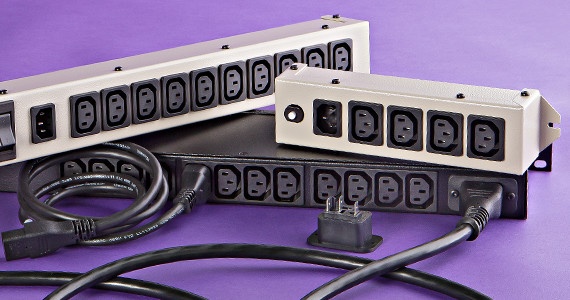Accessory Power—Opening Up Opportunities for New Markets
Posted on 11/7/16 12:00 AM

One of the keys to success for a company is to have choices available to make a product more marketable. An accessory power system allows options that help to simplify power supply connections. It can also open up opportunities for new markets.
Accessory power defines power connections to peripheral equipment from a central system. An accessory power system uses IEC interconnection components. Country-specific plugs and outlets are not needed for accessory power connections. Using accessory power to distribute and control power to peripheral equipment through a central system is advantageous for a number of areas, including industrial, information technology, medical, dental, ophthalmological, test and measurement, and food production.
The accessory power system allows a designer to build a product that can simplify and organize a rack and/or multiple equipment units. Such a system can be beneficial when the main power system will be controlled by the accessory power strip, when there is not sufficient panel space, or when an overall power control needs to be added to coordinate different pieces of equipment.
For example, accessory power systems are used in a number of mall and airport kiosks. In these places, where space is at a premium, there are numerous electrical devices that need power. By using an accessory power system, only one cord set is plugged into the power source and the rest of the devices are supplied with power through jumper cord sets which connect to the accessory power strip. Another example where this type of system can be valuable is with a computer setup that has a variety of components such as a monitor, CPU, keyboard, and printer.
An accessory power system can help a company offer products that are more easily adapted to the needs of global markets without requiring reconfiguration by the user. It gives a company the ability to offer a product that can be used in many different countries because it eliminates the need to have all of the different kinds of plugs available or inventoried somewhere in a warehouse. This can result in a huge cost saving benefit for the company.
IEC 60320 components are a common connector interface throughout the industrialized world which simplifies the task of specifying a connector to use on a cord set. They provide a framework to work from for product design and testing. They also help to prevent improper connections by their design configurations and provide a uniform connector for similar voltages, thus ensuring a safe connection.
This system makes it easier to build for worldwide markets. With a variety of different plug/socket patterns used around the world, exporting to the global market may seem unapproachable or too expensive to pursue. Part of the versatility of the accessory power system is because IEC components are generally accepted for use throughout the world. Previously, when a company would send a product that used different power supply connections to various countries, a country-specific cord for every connection was required. Now only one country-specific cord set is needed as the primary power connection.
Interpower has spent the last few years designing and perfecting its own accessory power system. The APS (Accessory Power Strip) and the PDU (Power Distribution Unit) allow equipment to be built with the different components working together in one system. The APS is a socket strip that provides multiple power outlets for connecting all of the pieces of equipment to a single source of electrical power. The PDU is a socket strip using IEC components in a case enclosure that is larger than an APS. It fits into a 19-inch rack. Both the APS and the PDU can be utilized wherever power needs to be supplied to multiple units of equipment.
See the complete line of Accessory Power Strips and Power Distribution Units available at Interpower. See also the APS and PDU highlighted on the Featured Product page.
Interpower offers free technical support. For further assistance, please see Interpower’s contact information below.




